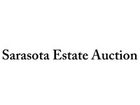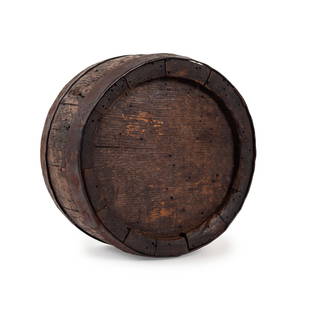

 Discovery- InteriorsBonhamsSponsored.Your ad here?
Discovery- InteriorsBonhamsSponsored.Your ad here?



Discovery- Interiors
Bonhams
Sponsored.Your ad here?


 Discovery- InteriorsBonhamsSponsored.Your ad here?
Discovery- InteriorsBonhamsSponsored.Your ad here?



Discovery- Interiors
Bonhams
Sponsored.Your ad here?

Another American Revolutionary War Signature
Similar Sale History
View More Items in Militaria & War Memorabilia
Related Militaria & War Memorabilia
More Items in American Militaria & War Memorabilia
View MoreRecommended Collectibles
View More






Item Details
Description
This is a court document filed on behalf of Daniel Harrington a decade and a half after the Revolutionary War ended. Daniel Harrington was the owner of land next tothe parsonage of Jonas Clark, the reverend who saved the lives of John Hancock and Samuel Adams on the eve of the Battle of Lexington, when the British marched on Lexington to seize weapons from the colonists and to capture Hancock and Adams, who were considered leaders of the rebel cause in Massachusetts. Harrington was also a militiaman who was present when the British were attacking in Lexington, and he served on the American side at the siege of Boston and at the march to Vermont during the Ticonderoga campaign. The document is also signed by Joseph Hosmer, who has a big connection to the Revolutionary War. The document is a court order to attach the goods of John Munro for money he owed to Daniel Harrington dating back to November 1793, and the court order was granted in July 1797. We are not sure who John Munro was, but we found a John Munro (1728 - 1780) listed online as a British soldier, merchant and Tory who was born in Scotland and made his way to New York and then Bennington, Vermont, where he became a land-owner, farmer, and operated mills and a nail factory, among other businesses. Munro was a prominent Tory, so his family and property were harassed during the pre-revolutionary period, and he was imprisoned twice by rebel forces - American forces. In 1775 he was identified as a British supporter who served as a captain in the King’s Royal Regiment of New York, he was accused of making threatening statements, he and his wife were incarcerated, his papers examined, and they were temporarily released on parole, which means they gave their word not to misbehave or act up against anyone. By July 1776, he again was in the "Tory jail" in Albany, was called a "dangerous enemy," and was subjected to further restrictions of his freedom. He was supposed to be relocated to Connecticut, but in 1777, he was sent to confinement in Kingston, New York, just north of New York City. By July 1778, he had made his way to Canada, and two years later he led a successful raid on Ballston Spa, New York, near Schenectady; he was in command of 400 British regulars and Indians from Canada who pillaged Ballston and took captives. At that time, he was called "Major Munro" and was identified as a "Tory from Schenectady”. Towards the end of the war, he commanded a garrison in Quebec, and in 1783, he explored land from Quebec to Halifax on behalf of a group of loyalists who had obtained land in Nova Scotia. So if this is the same John Munro, the court order has a lot of history. Daniel Harrington had become a captain by this time, so he had worked his way up the ranks in the Massachusetts militia, and the front side of the document has an official seal on it in the top left hand corner and the back side says the sheriff, Joseph Hosmer, had attached one chair belonging to John Munro and left notice of summons for Munro to appear in court as well, and Joseph Hosmer also had important connections to the Revolutionary War.Hosmer (1735 - 1821) lived in Concord, Mass. and came from an old English family who first appeared in New England in 1633. He was captain of a Concord company previous to the outbreak of the Revolution, and on the 19th of April, 1775, he got word long before daylight that the British were on their way to Concord, so he hastened to the village. Colonel James Barrett, an old and infirm man, had recently been appointed as commanding officer of the Colonial troops; in this emergency he named Joseph Hosmer as adjutant to assist him in forming the troops to resist the attack. As assistant to Barrett, Hosmer asked Major Buttrick and Colonel Robinson of Westford to lead the column. While the officers were consulting with some of the older Concord men, Hosmer noticed a great volume of smoke rising from the town where the British were burning stores. He went to the officers and asked, "Will you let them burn the town down?" Upon hearing this, the council immediately decided to attack, and the battle at the North Bridge began. Captain Hosmer and his brother Benjamin went to Cambridge that day, as did so many others in pursuit of the retreating British.During the remainder of the war Mr. Hosmer (who later had the grade of major) was active in keeping the commissary department supplied. He was superintendent for Middlesex County, and in the records of the Massachusetts Soldiers and Sailors in the Revolutionary War his name is found in many places.Later, when the new government was formed, he was in the House of Representatives for five years and in the Senate of the State for nine years. He was for many years chairman of the committee of ways and means in the House and in the Senate. The last public office which he held was that of High Sheriff of Middlesex County, which he held for about fourteen years (1794 to 1808). At that time the office was considered more honorable than it was in later years.This biography comes from the Hosmer Geneaology, Descendants of James Hosmer Who Emigrated to America in 1635 and Settled in Concord, Mass, compiled and written by George Leonard Hosmer, and this is all about the beginning of the Revolutionary War -the “shot heard round the world” - and a life-changing event for virtually all Americans. And if you don’t know enough about American history, the North Bridge was in Concord, and on the morning of April 19, 1775, colonial militia from Concord and surrounding towns exchanged gunfire with British regulars guarding the river crossing at the bridge - this is where the colonial Minute Men and militia were ordered to defend the town and fired upon British soldiers - and it was the site of the “shot heard round the world” that marked the beginning of the American War for independence. Although the fighting at the North Bridge lasted only a few seconds, it marked the beginning of a massive battle that raged over 16 miles as the British retreated and the Minute Men chased the British all the way back to Boston. The battle included about 1,700 British regulars and over 4,000 colonial militia and it was fought along the Bay Road, the main road that connected Lexington, Lincoln, and Concord - three of the main towns involved in the outbreak of the American Revolutionary War. So the document is not just related to Daniel Harrington who was at Lexington on the day of the battle at the Lexington Green, it was also signed by Joseph Hosmer, one of the leaders who ordered the Americans to resist and attack the British at the very beginning of the Revolutionary War - on the very day it began - a day which shaped America’s future forever. The document measures 6 5/8 x 8 1/4 in. wide, with two folds on it, like a folded letter, light edgewear and a small chip in the word “Massachusetts”, otherwise a document which doesn’t seem like much - it was just a court order for someone to pay a debt - but it is clearly related to people who were actually there, at the beginning of the War for American Independence.#3544 #79
Buyer's Premium
- 26%
Another American Revolutionary War Signature
Estimate $120 - $200
9 bidders are watching this item.
Shipping & Pickup Options
Item located in SARASOTA, FL, usOffers In-House Shipping
Local Pickup Available
Payment
Accepts seamless payments through LiveAuctioneers

TOP

































![[HANCOCK, John] Washington’s Spy, Officer’s Commission: Partly printed document signed by John Hancock as President of the Continental Congress, for Epaphras Bull (1748-1781). [Philadelphia, Pennsylvania], 10 January 1777. 1 page, ## x ## in. Completed in](https://p1.liveauctioneers.com/7226/322253/173251471_1_x.jpg?height=310&quality=70&version=1710004847)
![American Revolutionary War Period Mahogany Countertop Dress...: American Revolutionary War Period Mahogany Countertop Dressing Mirror. [American, ca. 1780]. Original countertop dressing mirror with original wooden stand and adjustable supports. Approximately 25 x](https://p1.liveauctioneers.com/928/328184/176813368_1_x.jpg?height=310&quality=70&version=1714496988)






![[Daguerreotype] Revolutionary War & War of 1812 Hero: Quarter plate daguerreotype. Thermoplastic case affixed with a silver plaque engraved "Genl. Mooers, Plattsburgh, NY." c. 1855 daguerreotype of an early painted portrait of General Benjamin Mooers (17](https://p1.liveauctioneers.com/7226/322253/173251484_1_x.jpg?height=310&quality=70&version=1710004847)


![[REVOLUTIONARY WAR] 1783 Treasury Receipt re: Robert Morris: Autograph document signed by John Lawrence. Hartford, Connecticut, 31 March 1783. 1 page, 8 1/4 x 7 5/8 in. Docketed and signed by Captain Jabez Perkins to verso. A scarce treasury receipt document fr](https://p1.liveauctioneers.com/7226/322253/173251483_1_x.jpg?height=310&quality=70&version=1710004847)

























![George Washington Signed Discharge: Partly printed discharge document signed by George Washington, as Commander in Chief of the Armies of the United States. Newburgh, [New York], 4 January 1783. 1 page, ## x ## in. Undersigned by Washin](https://p1.liveauctioneers.com/7226/322253/173251475_1_x.jpg?height=310&quality=70&version=1710004847)



